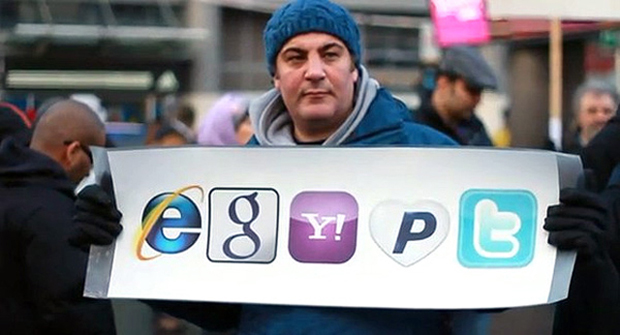The big meme in advertising today is that brands are gradually moving to Facebook, because on Facebook, you can find the specific audience you want to advertise to. Want to market to 30-something moms in Tallahassee who like ice cream? Using Facebook's controls, you can make sure your ad gets placed right in front of people who’ve identified themselves as 30-somethings, living in Tallahassee, who like ice cream.
But as much information as Facebook users post about themselves, the system still relies on a core assumption: Namely that, because a user has “Liked” topic X, or added topic X to their interests, they actually care deeply about topic X. That might not actually be the case. Which is why the Experience Project, which today launches a new product that can help advertisers get in front of at least some of audiences they care about, thinks it's got a horse in this race. And that horse could disrupt the Facebook advantage, at least when it comes to advertising.
The Experience Project is a network where people connect with each other based on experiences they care about. It started four years ago as an online support network for people with MS. But it’s since grown into a place where people share their thoughts and experiences about everything from fly fishing and parenting to breast cancer and global warming. In other words, people don't connect on the Experience Project based on who they know (the “social graph”), as they do on Facebook. They connect based on what they care about (“the interest graph”).
About a year and a half ago, major brands started contacting the company to find out how to get in front of the site's users, particularly in front of those who were part of communities connected to causes that the brands already supported. Haagen-Dazs, for example, had recently launched a campaign to support honey bees. They wanted to raise awareness about their project among people on the site who might naturally care about the issue, like those discussing the problem of colony collapses, or environmental issues in general.
Since then, a number of companies have worked with Experience Project, including Sony, Nestle, and American Express. The companies' interest reflects the larger trend toward cause marketing. Increasingly, brands are trying to gain customers and engender loyalty not only by talking about their products, but also by highlighting their commitments to particular causes. Pepsi did this in a big way last year, when it decided to forgo advertising during the Super Bowl and instead put its $20 million budget to work supporting causes voted on by visitors to its Pepsi Refresh site.
Last year, Experience Project launched BroadCause, a site that highlighted brands’ cause-related campaigns. Today, BroadCause is expanding with a new toolset that non-profit organizations and charities themselves can use to manage projects and campaigns online—everything from a high school holding an auction to the United Way raising awareness about its campaign to drum up one million education volunteers.
Experience Project executives expect that the new toolset to attract many more cause-related communities to its site, which in turn will make it an increasingly attractive place for brands who want to do cause marketing. In the short run, Experience Project will continue to match up brands with communities on a custom basis, but in the long run, executives say they plan to create turnkey solutions--like AdSense--where brands can manage their own campaigns themselves.
Currently, Experience Project’s user base of five million can’t hold a candle to the likes of Facebook, or even Twitter. But after four years in the market, say executives, the site has hit a tipping point, and growth is now accelerating. The user base, founder Armen Berjikly tells Fast Company, is increasing by 5% per month.
Plus, says CEO Pete Jackson, an entrepreneur who serves on Eventbrite’s board and most recently was a partner at Mike Maples’ Floodgate fund, there’s this to indicate their potential: "We didn't go to the brands" when coming up with this idea, he tells Fast Company. "They came to us."
Read More: Most Innovative Companies: Facebook and Twitter.
[Image: Flickr user ausnahmezustand]
E.B. Boyd is FastCompany.com's Silicon Valley reporter. Twitter. Email.
Tuesday, April 5, 2011
Are Facebook and Twitter the Best Ways for Brands to Reach Consumers?
Subscribe to:
Post Comments (Atom)


No comments:
Post a Comment